Charlie Parker’s compositional study
Charlie Parker (1920–1955) has long been admired as an improviser, but as brilliant as his solo skills were, Parker was also a significant jazz composer, an aspect of his musicianship that has not been sufficiently investigated and appreciated.
Please, subscribe to our Library.
If you are already a subscriber, please, check our NEW SCORES’ page every month for new sheet music. THANK YOU!
Charlien Parker ranks as one of the most important jazz composers of his era by virtue of the quality and continuing popularity of his best-known tunes. Performed widely, they are considered seminal within the jazz repertory. Yet, despite the importance of his contribution, Parker’s approach to composition was casual, and as a result there seem to be no extant working manuscripts that might suggest how Parker composed his pieces.
This article explores what we can infer about Parker’s compositional process from those instances where he made revisions to improve or (in one case) create the final product. In particular, there is one instance of Parker revising a work already completed (“Ornithology”), one instance of Parker combining two pieces by another composer into one of his own (“My Little Suede Shoes”), and two instances of Parker composing in the studio where we can hear his revisions immediately (“Red Cross” and “Blues (Fast)”).
Ornithology by Charlie Parker
Parker composed at the last minute, usually because he needed material for recording dates. Even more last-minute, there are instances of Parker composing during sessions themselves. For example, bassist Tommy Potter recalls,
On record dates he could compose right on the spot. The A. & R. man would be griping, wanting us to begin. Charlie would say, “It’ll just take a minute,” and he’d write out eight bars, usually just for the trumpet. He could transpose it for his alto without a score. The channel [bridge] of the tune could be ad libbed. The rhythm section was familiar with all the progressions of the tunes which were usually the basis of originals. (Reisner 1962, 183)
Best Sheet Music download from our Library.
The story of the trumpet parts related by Potter is corroborated by the reproduction of two such parts in Parker and Paudras 1981. A photograph on p. 196 shows a trumpet part labeled “Si Si,” which is in fact the tune now called “Blues for Alice,” while on p. 190 we see a photograph as a collage, including a trumpet part whose name is obscured but is the tune now called “Si Si.”
The names of the two tunes were probably interchanged when the records were originally produced. Parker and Paudras 1981 also shows us that Parker would indeed write out a part for himself if the tune were complicated enough and composed in advance, for on p. 313 there is a photograph of a manuscript marked “Bird” in the upper left corner.
The manuscript is an alto part to Parker’s “Passport Rhythm,”. Atop the page, in place of a name for the tune, we see what may be “No. 2,” so it may have been the second piece Parker composed for the session.

In the late 1990s, I had the opportunity to photocopy sample Parker autograph manuscripts at the Institute of Jazz Studies and came across two other Parker trumpet parts that were preserved from his recording session of August 8, 1951, the same session that produced “Blues for Alice” and “Si Si.”
These parts contain no crossings-out or rewritten passages, and as such tell us virtually nothing about Parker’s compositional process. They may have been copied from prior manuscripts, which would have allowed us to see Parker revising his work on paper, but none of these seem extant, However, they do provide a melody notated by Parker and examples of his music manuscript.
The Library of Congress (L. C.) has an extensive selection of copyright deposits of Parker compositions. Of the four pieces discussed in this article, “Blues (Fast)” is the only one that lacks an L. C. deposit. However, none of the other three is in Parker’s hand, and in fact the total number of L. C. deposits that were copied by Parker is small: only four out of a total of 90 deposits. An example of an L. C. deposit in Parker’s hand appears, in “Bill’s Bounce.” It may be compared to the previous examples of Parker’s manuscript.
Far better known than his manuscripts are stories of Parker composing quickly. One of the most important Parker studio sessions was his first as a leader, which took place November 26, 1945 for Savoy Records. Sadik Hakim (Argonne Thornton), a pianist who probably performed at the session, recalls the haste of Parker’s preparation:
I was living in the same apartment with Charlie Parker at that time (it was November 1945). He got a telegram from Savoy in the morning telling him to get a group together and make a recording date. By 10:30 A.M., he had written the two new blues, “Now’s The Time” and “Billie’s Bounce” (actually it should be Billy’s, it was dedicated to Billy Shaw), and for the other two numbers he planned to use a “head” of his those fellows were playing then which was called “Thriving From a Riff” on the record and later called “Anthropology,” and finally “KoKo”—which is based on the chords of“Cherokee,” of course. He asked me if I wanted to play on the date. Naturally I was quite thrilled and honored to be working with him. (Hakim 1959, 11)
So early on in Parker’s maturity, as he achieved leader status, we find him composing when he needed material. However, toward the end of his life, rapid composition for a specific purpose was still the norm. Consider drummer Max Roach’s story of how “Chi Chi” was composed in 1953:
And Bird came by, and I said “Damn!” It was like 3 o’clock in the morning. I lived on 30th Street between 3rd and 2nd Avenues and I had a basement apartment. He’d come by anytime and, of course, I let him in, whatever. He saw me laboring over this goddamn music. He said, “What’ cha doin?” I said “I got a session I’m producing; my first, myself, tomorrow.” So he says, “OK here’s a gift.” And this is the truth Phil, he sat down at a little kitchen table and a cheap piano—and I wish I had saved that goddam ’script; I never throw anything away—he wrote off the tune like a letter and I did it the next day [April 10] with Hank Mobley. We recorded it, then Bird recorded it. That’s “Chi Chi.” (Schaap 1988, 30)
Charles Colin, a music publisher in New York City who later published Parker’s work, attended a Parker session supervised by Norman Granz, Parker’s final record producer, and provides us with a memorable account of the proceedings. Note in particular Granz’s frustration at Parker showing up without material:
Charlie Parker’s quintet of sidemen patiently awaited instructions from Charlie. Out of the blue, Charlie Parker announced to Norman Granz: “I don’t have any music and I just can’t remember the chord changes of the bridges. We’ll fake the first eight and repeat the second eight bars but remembering the bridge is a big problem.”
Frustrated, Norman screamed, “Here we go again! This one tune is gonna take the whole night and way into the next morning! Send a messenger to Colony Music on 48th Street and Broadway for an original copy of the piano sheet music. At least we can lay down the right chord changes.”
This was shockingly exciting for me. I never experienced such a star holding up and delaying an important and expensive recording session. Frustrated, Norman admitted this was nothing new. Evidently this was a common occurrence for him but it was one of the most amazing, heart-beating experiences I’ve ever encountered!
The messenger finally arrived with the sheet music and Charlie created instantaneous head arrangements! His first instructions were to have a four drum beat. Charlie would play the first eight bars by himself, then repeat the next eight. Then one of the side men would take the next eight repetitive refrains. With this layout, the quintet ran it down for the first cut! (Colin 1994, 5–6)
The session described by Colin was not the one that created “Blues (Fast),” a piece discussed later in this article, since the piece in question was based on a popular standard and not blues changes. However, Colin’s observations corroborate Tommy Potter’s and are undoubtedly pertinent to Parker’s sessions in general; that is, since Granz claimed that Parker’s lack of preparation was the norm, Colin’s account may be taken as typical of Granz’s problems in trying to run a small-group Parker session. Also significant is the amount of time taken for Parker to create the tune, for “Blues (Fast)” required twelve takes.
Aside from stories of Parker composing at the last minute, just before or during sessions, we have little to go on regarding how Parker may have thought about creating his compositions. The four pieces discussed in this paper vary considerably in their approach (and my treatment of them will vary accordingly), but I have chosen them because they allow us at least to glimpse some of the ways that Parker thought about creating pieces. Before proceeding to them, however, let me conclude this introduction with general remarks on jazz composition to set the stage for the Parker tunes.
A jazz composition is a distinct musical piece by one or more musicians (its “composers”), created for or during a jazz setting, and intended for future performance or realization or later becoming available for such future performance or realization. This accords with the views suggested by some scholars that a musical composition must be “discrete, reproducible, and attributable.” Jazz compositions can be divided into three groups: large-scale works, smaller-scale works intended for improvisation, and directly improvised works.
Larger-scale jazz compositions vary widely in scope, but always seem to show self-contained sections. “Tiger Rag” (LaRocca, 1917), “Carolina Shout” (Johnson, 1917), or “The Pearls” (Morton, 1923) are examples from the early jazz repertory that are small enough to fit the three-minute format of the 78-rpm record, but are nonetheless multi-sectioned works. More ambitious larger-scale works similarly involve multiple sections, and one or more of these might be extensive in scope.
Larger-scale works may also combine elements of the Western concert-music tradition or other musical cultures with features of jazz, and sometimes conductors may be involved in directing the ensembles. Some sections or parts of sections may involve improvisation. Many jazz composers have written large-scale works, for example Duke Ellington, Charles Mingus, and Mary Lou Williams. Charlie Parker was interested in this repertory, and he contributed improvisation to the recording of Chico O’Farrill’s Afro-Cuban Jazz Suite, but he did not write such works.
The second type of jazz composition is the smaller-scale work expressly written for improvisation, and it is for this improvisational repertory that Parker composed his more traditional pieces. Works in this repertory are typically in standard song forms and often appear in fakebooks with melodies, chord symbols, and sometimes lyrics.
Jazz instructional programs and method books often provide a sampling of such tunes and direct students to learn them, as they are considered fundamental to performing jazz. This improvisational repertory can itself be divided into two groups: popular songs (many of them “standards” of the American Songbook) and jazz tunes (generally understood as tunes written by jazz musicians, usually for improvisation, and sometimes called “heads”).
Popular standards, by their very nature as songs, are more likely to be well known and have lyrics. Long-lived jazz tunes may be called “jazz standards,” a category often used to include those popular standards preferred by jazz musicians. Among the many jazz musicians who have written for this improvisational repertory are some of the best known.
In addition to works written prior to being recorded, Parker also directly improvised pieces that took on a life of their own, issued as recordings with Parker credited as composer. I consider these works to be Parker “compositions,” although they are not compositions as traditionally conceived. The oral component of jazz (and presumably other musical cultures with similar characteristics) urges us to expand the idea of “composition” to account for products of improvisation with sufficient compositional attributes.
Take A of Parker’s recording of Gershwin’s “Embraceable You” (Gershwin-Gershwin, 1930) on October 28, 1947, is a well-known example of his studio recordings. Although the Gershwin piece provides the title to the recording, the significant item at hand—what we care about vis-à-vis Parker as a jazz performer—is his interpretation of or improvisation on the pre-existing piece.
The recording is a performance not of a Parker composition but rather of a Gershwin song, even though its melody is not expressly stated. The record’s title and excerpts from the original melody, particularly toward the end of the recording, connect the performance to the Gershwin original.
In contrast to Parker’s “Embraceable You,” consider take C of Parker’s recording of “Bird of Paradise” from the same session: the recorded improvisation is based on the form and harmonies of “All the Things You Are” (Kern-Hammerstein, 1939), but not its melody. Mayhew Music Co. and Charlie Parker Music Co. jointly registered a lead sheet of the improvisation with the L. C. (deposit EU659286) on February 23, 1961, as “Bird of Paradise” and credited the piece to Charlie Parker. Therefore, the piece is not only a Parker recording, but also a Parker “composition.”
Parker’s “Ornithology”
We know that Parker memorized Lester Young solos, including the “Shoe Shine Boy” solo. (He reproduced this solo at a jam session recorded in February 1943. Using the same saxophone fingering, Parker plays the tail of what becomes the “Ornithology” idea at the beginning of the “Honey & Body” recording from early 1940.
About two and a half years after recording “Honey and Body,” Parker recorded “The Jumpin’ Blues” solo on July 2, 1942, a phrase that combines the beginning of the fragment first heard in Young with its tail, first heard in “Honey & Body”. Note that the keys are all consistent (concert F), and the “Ornithology” lick is now set in place with the “Jumpin’ Blues” solo.
About six months after recording “The Jumpin’ Blues,” Parker joined the Earl Hines Orchestra (December 1942). Harris was also a member of the band, and became fascinated with the Parker “Sepian Bounce” solo, as reported in Feather (1977, 26). He probably became aware of the “Jumpin’ Blues” solo at this time as well, as it was recorded at the same session as “Sepian Bounce,” and may have been experimenting with it compositionally.
Harris was later performing with Coleman Hawkins, and the latter player may have picked up the “Jumpin’ Blues” lick from him. Later, Hawkins, perhaps continuing to be interested in the lick, used it for the out-chorus of “Hollywood Stampede”, where it is varied accordingly through the circle-of-fifths progression of “Sweet Georgia Brown.”
It was also around this time, the early 1940s, that Harris was frequenting Monroe’s Uptown House and, as we have seen, was fascinated by “How High the Moon.” At some point, Harris may have been inspired to take the “Jumpin’ Blues” lick and apply it to “How High the Moon” changes rather than the “Sweet Georgia Brown” changes heard in “Hollywood Stampede.” However, because “How High the Moon” was being performed in concert G major, Harris needed to change the key, thus transforming the “Jumpin’ Blues” lick in F into the “Ornithology” lick in G.
Parker, meanwhile, continued to play variants of the “Jumpin’ Blues” idea in F, as heard in the “Billie’s Bounce” solo of November 26, 1945.
When we first hear him playing “Ornithology” at the Finale Club in February–March 1946, the beginning of the piece is finally set. Thus, it’s probable that Parker, if he had a hand in composing the “Ornithology” melody at all, had worked on it with Harris before traveling to Los Angeles in December 1945, and the beginning of the piece may have been determined as early as 1943.
The formula that begins “Ornithology” has remarkable precedents, showing Parker’s connection to both Young and the Kansas City jazz scene of the 1930s, as well as its close association with his personal style. Harris probably composed mm. 3–6, but, as pointed out by Sturges 2006, he almost surely wrote mm. 7–8, as these bars appear in a “How High the Moon” solo that Harris recorded in 1945 with Don Byas.
A motive D is bracketed in mm. 4, 6, and 8, consisting of a descending third on the bars’ downbeats, usually with the rhythm of quarter-eighth-eighth. As the tune proceeds from m. 8, motive D continues to appear. The appearance of motive D in Harris’s solo and then in the tune suggests that Harris probably wrote mm. 7–11 as well.
Finally, to complete the tune, the composer(s) needed to work up the remaining five bars of the form, i.e., the half cadence set up by mm. 12–16 in the first half, and (on repeat) the full cadence in mm. 28–32. We hear the first attempts at the Finale Club performance of February or March 1946—material that proved unsatisfactory.
The cadences to the first half may have been partially planned, as Davis and Parker each play the same ascending figure to D5 before Parker improvises the turnaround. In the second half of the performance of the head, the cadence appears to be improvised before pianist Joe Albany plays repeated Ds to introduce Parker’s solo. (As the recording is a fragment, there is no out-chorus.)
The studio recording of “Ornithology” was made around the same time as the Finale Club performance, on March 28, 1946. The first time through the tune, the pianist improvises the turnaround through mm. 15–16. The second time through the tune, in mm. 28–32, the triplet figure is passed among the players without alteration and with no definitive cadence.
The triplet-figures themselves are a mystery. They weren’t present at the Finale Club recording, and so perhaps the musicians worked out the idea at the session itself, with Parker’s direction or at least acquiescence. Koch refers to the triplets as “the difficulty in this tune” (1999, 90), while Henriksson calls them “aesthetically unpleasing” (1998, 136).
As Sturges points out (2006, 10–11), the repeating triplet figure is not idiomatic to bebop style and is effective only if there are several players trading it off. It’s especially bland with only one player taking the melody.(36)
Nonetheless, the earlier version of the piece with the triplet figures continues to circulate widely. It appears in the tune’s first publication (Parker 1948, 6). Most significantly, it continues to appear in The Real Book, Vol. 1 (ca. 1975, 335) and in the popular Charlie Parker Omnibook (Aebersold 1978, 6).(37)
Parker was hospitalized with a mental and physical breakdown after a Dial session on July 29, 1946, and was a patient at Camarillo State Hospital in California until the end of January 1947. As he began performing again, “Ornithology” became part of his standard playlist and can be heard at various Hi-De-Ho Club gigs in Los Angeles in March 1947. In these performances, which were recorded in part by Dean Benedetti, performances of the theme are often cut off; what fragments of them are heard, however, all feature the triplet version.
Between March 1947 and May 1948, the endings of each half of “Ornithology” were rewritten. These revisions can be first heard on a Parker performance made in Washington, D.C. on May 23, 1948. At the presentation of the theme, Parker continues to play the triplets for the first half of the tune, while for the second half he plays the revision. On the out-chorus, Parker plays the revised version for each half.
With the changes taken from “How High the Moon,” it’s evident that the harmonic rhythm doubles for the final cadence with the tonic arriving at m. 31; this contrasts the one-bar harmonic rhythm that leads to the half cadence. Parker, then, essentially negotiates the chromatically descending chord progression twice as quickly in the second half, and as such the top line F –F–E–E –D descends more precipitately to set up the GM I chord at m. 31.
In the second half, the descent of the piece’s primary line — is clarified by the interweaving of the arpeggiations through the chromatic chord progression. This interweaving places the primary line’s final descent squarely on each bar’s downbeat, thus imparting a finality that obviates a codetta or other extension to conclude the tune (aside, perhaps, from a brief drum fill). The large-scale voice leading that ends the first half is less clear, but a Schenkerian – // – – interrupted form may be inferred with the interrupting /V occurring at mm. 15–16.
As mentioned at the beginning of this discussion of “Ornithology,” it is unclear who created the revision that Parker played for the remainder of his career. I would suggest that the precision of the voice leading points to Parker as the reviser of the tune. Increasing that probability considerably is the occurrence of a particular rhythmic figure in the first ending: a four-note pattern bracketed in Example 10a, mm. 13–14, then again in mm. 15–16.
This standard Parker formula is found in many of his compositions. The first part of the tune, on the other hand, contains none of the Parker syncopations that are characteristic of his pieces. Certainly, a key improvement Parker brought to the revision is an outstandingly clear voice leading of the melody for the cadence of each half, giving the tune the snappy ending that has helped define it ever since.
Download Charlie Parker’s sheet music from our Library.
Browse in the Library:
| Artist or Composer / Score name | Cover | List of Contents |
|---|---|---|
| All Sondheim Vol IV Music and lyrics |
 |
All Sondheim Vol IV Music and lyrics |
| All That Jazz piano-vocal Arrangement |
 |
|
| All The Things You Are (Guitar And Tabs) | All The Things You Are (Guitar And Tabs) | |
| All The Things You Are (Guitar And Tabs) (Musescore File).mscz | ||
| All The Things You Are By Jerome Kern Guitar Transcription |
 |
|
| All The Things You Are Jerome Kern Oscar Hammerstein 2nd 1940 Jazz Standard (Vintage sheet music) |
 |
|
| All Time Standards (Songbook) Jazz Guitar Tablature Chord Melody Solos (Jeff Arnold) |
 |
All Time Standards (Songbook) Jazz Guitar Tablature Chord Melody Solos (Jeff Arnold) |
| All Time Standards Piano (Arr. Gabriel Bock) |
 |
All Time Standards Piano (Arr. Gabriel Bock) |
| All You Need Is Ears George Martin with Jeremy Hornsby 1979 (Book) The story o the recording genius who created The Beatles |
 |
|
| Allan Holdsworth Just for the curious book Guitar with Tablature |
 |
|
| Allan Holdsworth Melody Chords For Guitar |
 |
|
| Allan Holdsworth Super Guitarist with TABs |
 |
Allan Holdsworth Super Guitarist with TABs |
| Alle prese con una verde Milonga (Paolo Conte) | ||
| Allevi, Giovanni – Back To Life |
 |
|
| Allie Wrubel – Gone with the Wind |
 |
|
| Allman Brothers Guitar Songbook |
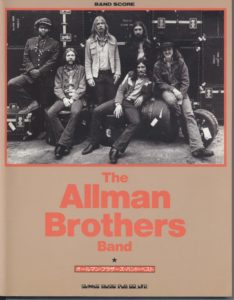 |
Allman Brothers Guitar Songbook |
| Allman Brothers, Best Of The (Piano, Vocal, Guitar) |
 |
Allman Brothers, Best Of The (Piano, Vocal, Guitar) |
| Allman Brothers, The – The Definitive Collection For Guitar Vol 1 with Tablature |
 |
Allman Brothers, The – The Definitive Collection For Guitar Vol 1 |
| Alma Redemptoris Mater |
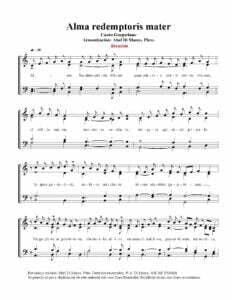 |
|
| Almeno tu nell’universo (Mia Martini) | ||
| Almir Chediak Ivan Lins Guitar Songbook Vol 2 |
 |
Ivan Lins Guitar Songbook Vol 1 by Almir Chediak |
| Alok – Hear Me Now Sheet Music |
 |
|
| Alone together (Howard Dietz & Arthur Schwartz) | Alone together (Howard Dietz Arthur SchwArtz) | |
| Alone Together (Musescore File).mscz | ||
| Alone Togheter Guitar Solo Transcription Jazz Standard |
 |
|
| Alphaville Forever Young (piano & Guitar) |
 |
Alphaville Forever Young (piano & Guitar) |
| Also Sprach Zarathustra Op. 30 – Richard Strauss (Musescore File).mscz | ||
| Alternative Rock Sheet Music Collection |
 |
Alternative Rock Sheet Music Collection |
| Always on my mind – Elvis Presley – easy arrangement for piano, with fingering |
 |
|
| Amadeus – W.A. Mozart (film score arr. for piano solo by D. Fox) |
 |
Amadeus – W.A.Mozart |
| Amadeus (original soundtrack piano solo arrangements) |
 |
Amadeus (Film score book) Piano Solos |
| Amalia Rodriguez FADOS Melodias De Sempre (GUITAR) |
 |
Amalia Rodriguez FADOS Melodias De Sempre (GUITAR) |
| Amando amando (Renato Zero) | ||
| Amar Pelos Dois (Salvador Sobral) | ||
| Amarcord (Nino Rota) | ||
| Amazing Grace – Tradicional (Piano ) |
 |
|
| Amazing Grace Traditional (Jazzy ver. sheet music) |
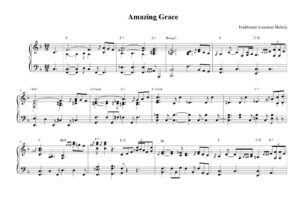 |
|
| Amazing Phrasing – Guitar 50 Ways to Improve Your Improvisational Skills (Guitar TABs Amazing Phrasing) (Tom Kolb) |
 |
Amazing Phrasing – Guitar 50 Ways to Improve Your Improvisational Skills (Guitar TABs Amazing Phrasing) (Tom Kolb) |
| Amelie Poulain – 6 pieces for piano – Yann Tiersen – Yann Tiersen |
 |
 |
| America (My Country ‘Tis of Thee Easy Piano Level 2 |
 |
|
| America Greatest Hits Piano Vocal Guitar chords |
 |
America Greatest Hits Piano Vocal Guitar chords |
| America Greatest Hits (piano & Guitar) |
 |
America greatest |
| America Horse With No Name Piano vocal | America Horse With No Name Piano vocal | |
| America’s Songs The Stories Behind The Songs Of Broadway, Hollywood, And Tin Pan Alley (Philip Furia, Michael Lasser) Book |
 |
|
| American Folk Songs For Guitar with Tablature |
 |
American Folk songs |
| American Folk Songs, My First Book of – Bergerac |
 |
|
| American Indian Melodies A. Farwell Op.11 (1901) |
 |
American Indian Melodies A. Farwell Op.11-min |
| American Pie (sheet music) |
 |
|
| American Popular Music (Book) by Larry Starr and Christopher Waterman |
 |
|
| Americana – Alegre, Magín (Guitarra) | Americana – Alegre, Magín (Guitarra) | |
| Amici Miei (Carlo Rustichelli) | ||
| Amor mio (Battisti) | ||
| Amore bello (Claudio Baglioni) | ||
| Amy Beach – Op.15 Four Sketches in Autumn |
 |
|
| Amy Grant – Breath Of Heaven | ||
| Amy MacDonald This Is The Life |
 |
AMY MACDONLAD |
| Amy Winehouse – Valerie |
 |
|
| Amy Winehouse – Valerie (sheet music) |
 |
|
| Amy Winehouse Amy Amy Amy |
 |
|
| Amy Winehouse Back To Black Songbook |
 |
Amy Winehouse Back To Black Songbook |
| Amy Winehouse Frank Songbook |
 |
Amy Winehouse Frank |
| Amy Winehouse I Heard Love Is Blind |
 |
|
| Amy Winehouse Just Friends |
 |
|
| Amy Winehouse Rehab |
 |
|
| Amy Winehouse You Know Im No Good |
 |
|
| An affair to remember (Harry Warren) | ||
| An American In Paris An George Gershwin (Concert Band)An American In Paris An George Gershwin (Concert Band) Arr. by Naohiro Iwai |
 |
|
| An American Tail – The Marketplace – James Horner | ||
| An Introduction To Bach Studies (eBook) |
 |
|
| An Irish Blessing (Musescore File).mscz | ||
| An Irish Blessing (SATB) Choral | An Irish Blessing (SATB) | |
| Analisis musical claves para entender e interpretar la Música (M. y A. Lorenzo) Español |
 |
|
| Analysis Of Tonal Music An Schenkerian Approach Allen Cadwallader and David Gagné (Book) |
 |
|
| Analyzing Bach Cantatas by Eric Chafe (eBook) |
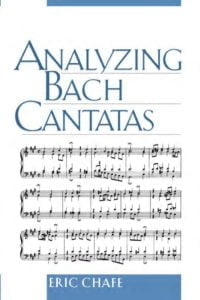 |
|
| Analyzing Schubert by Suzannah Clark (Cambridge Un. Press) (eBook) |
 |
|
| Anastacia Not That Kind Songbook |
 |
Anastacia songbook |
| Anastasia Once Upon A December arr. by John Brimhall (Piano Solo 2 Versions Easy And Intermediate) |
 |
|
| Anastasia Sheet Music songbook Piano & vocal |
 |
Anastasia Sheet Music songbook Piano & vocal |
| Ancora ancora ancora (Mina) | ||
| Ancora qui (Django Unchained) Elisa – Ennio Morricone | ||
| And the Waltz goes on (Anthony Hopkins) | ||
| Andante (from String Quartet op. 22) P. I. Tchaikovsky | ||
| Anderson Freire – So Voce Piano |
 |
|
| Andras Schiff – Music Comes Out Of Silence Book |
 |
|
| Andre Gagnon – L’air Du Soir |
 |
|
| Andre Gagnon – Le Reve De L’automne (sheet music Collection) |
 |
Andre Gagnon – Le Reve De L’automne (sheet music Collection) |
| Andre Gagnon – Les Jours Tranquilles | Andre Gagnon – Les Jours Tranquilles | |
| Andre Gagnon – Meguriai |
 |
|
| Andre Gagnon – Nelligan |
 |
|
| Andre Gagnon – Petite Nostalgie |
 |
|
| Andre Gagnon – Reves D’Automne | Andre Gagnon – Reves D’Automne | |
| Andre Gagnon – The Very Best Of Andre Gagnon (Sheet Music Songbook) |
 |
Andre Gagnon – The Very Best Of Andre Gagnon (Sheet Music Songbook) |
| Andre Gagnon Ciel D’Hiver |
 |
|
| Andre Gagnon Entre Le Boeuf et l’Ane Gris Musique Traditionelle |
 |
|
| André Gagnon L’air Du Soir |
 |
|
| Andre Gagnon Neiges |
 |
|
| André Gagnon Nelligan |
 |
|
| André Gagnon Origami |
 |
|
| André Gagnon Pensées Fugitives |
 |
|
| Andre Gagnon Pensées Fugitives |
 |
|
| André Gagnon Piano Solitude |
 |
Gagnon, André Piano Solitude |
| Andre Gagnon Prologue |
 |
|
| André Gagnon Selection Speciale de chansons (partitions musicales) |
 |
André Gagnon Selection Speciale de chansons (partitions musicales) |
| André Gagnon Un Piano Sur La Mer (Piano Solo Partition Sheet Music) | Gagnon André Un Piano Sur La Mer (Piano Solo Partition Sheet Music) | |
| Andre Popp Paul Mauriat Love Is Blue Piano Solo Arr. |
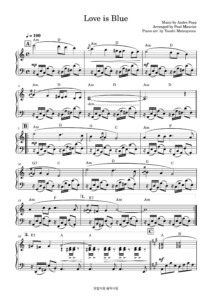 |
|
| André Previn – Play Like André Previn no. 1 |
 |
Andre Previn sheet music |
| Andre Previn – The Genius of (Piano Solos sheet music) |
 |
The genius of André Previn |
| Andre Rieu La Vie Est Belle (Songbook Collection As Performed By André Rieu) |
 |
Andre Rieu La Vie Est Belle (Songbook Collection As Performed By André Rieu) |
| Andrea Bocceli – Time To Say Goodbye | ||
| Andrea Boccelli – Time To Say Goodbye |
 |
|
| Andrea Bocelli Romanza songbook (Guitar & Voice) |
 |
Andrea Bocelli Romanza songbook |
| Andrea Bocelli – Anthology (songbook) |
 |
 |
| Andrea Bocelli – Con te partiro (Time to say Goodbye) Piano Solo arr | Andrea Bocelli – Con te partiro (Time to say Goodbye) Piano Solo | |
| Andrea Bocelli – Con te partiro (Time to say Goodbye) Piano Solo.mscz | ||
| Andrea Bocelli – The Best Of Songbook |
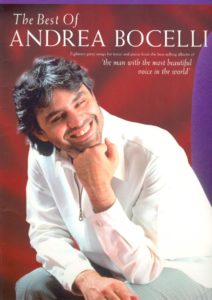 |
Andrea Bocelli best of |
| Andrea Bocelli Celine Dion The Prayer Easy Piano And Vocal By David Foster, Carole Bayer Sager, Alberto Testa And Tony Renis |
 |
|
| Andrea Bocelli Celine Dion – The Prayer – Easy Piano and Vocal by David Foster, Carole Bayer Sager, Alberto Testa and Tony Renis.mscz | ||
| Andrea Bocelli Cieli Di Toscana (Piano, guitar & Vocal) |
 |
Andrea Bocelli Cieli Di Toscana |
| Andrea Bocelli Sogno Songbook |
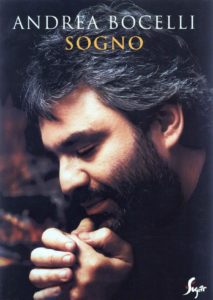 |
Andrea Bocelli sogno |
| Andrea Bocelli The Prayer |
 |
